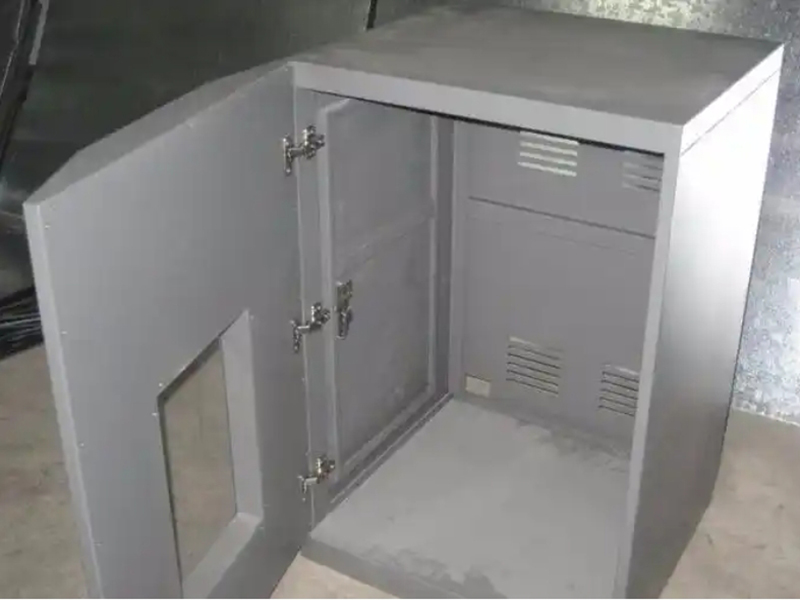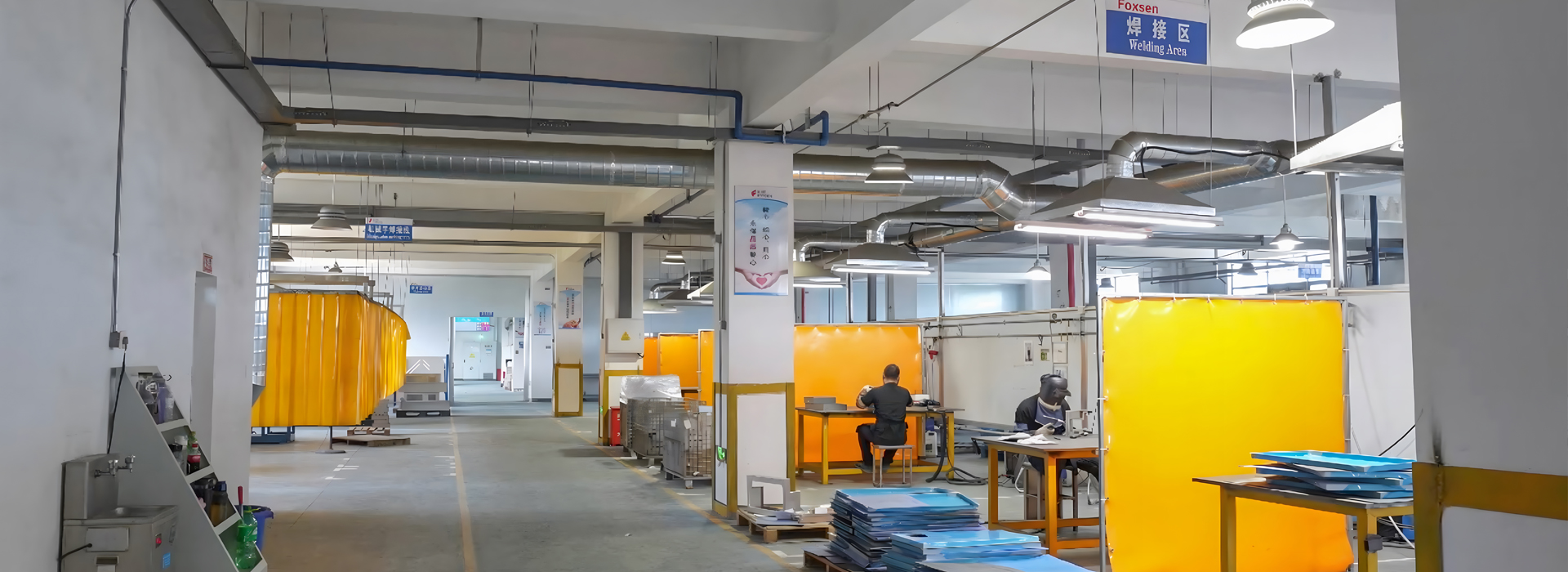Product Link:
https://www.sheetmetalparts.net/products-telecommunication-sheet-metal-parts.html
Ever tried figuring out how to turn a flat piece of metal into a sturdy sheet metal cabinet that can hold electrical gear or protect sensitive equipment? It’s not as simple as bending a few edges and calling it a day. Designing a sheet metal cabinet—think of it as a beefed-up sheet metal box—is all about planning every cut, fold, and weld to make something tough, functional, and precise. At Foxsen, where I’ve gotten my hands dirty with sheet metal parts, this process blends practical know-how with some serious number-crunching. Let’s walk through how to design one, especially for something like an electrical switchgear cabinet, with tips and tricks straight from the shop floor.

Step 1: Know What You’re Building
First off, what’s this sheet metal cabinet for? If it’s an electrical cabinet—like a GCS or MNS switchgear box—it’s got to house breakers, busbars, and wiring while keeping everything safe and accessible. These cabinets, often made from sheet metal parts, handle power distribution at voltages like 400V or 690V and currents up to 4000A, as seen in GCS specs. The design starts with understanding its job: protection (think IP4X ratings to block 1mm objects), control, and maybe even easy maintenance with a drawer-style setup. That purpose drives every choice—material, size, and layout.
Step 2: Pick the Right Material
The metal you choose sets the tone. Here’s what I’ve learned from working with sheet metal design:
Cold-Rolled Steel (SPCC): Great for cabinets up to 3.2mm thick—cheap, easy to shape, with a yield strength around 210 MPa. Perfect for a GGD cabinet on a budget.
Stainless Steel (SUS304): Tough as nails at 505 MPa tensile strength, rust-proof, and good up to 870°C. Ideal for an MNS cabinet needing IP54 protection against dust and water splashes.
Aluminum (6061): Lightweight at 2.7 g/cm³ (vs. steel’s 7.8 g/cm³), with a 276 MPa yield strength. Good for a portable sheet metal cabinet where weight matters.
For an electrical cabinet, SUS304 might win out if it’s outdoors—its 200 GPa elastic modulus means more springback, but we’ll tackle that later. SPCC works fine indoors with a paint finish to fend off rust.
Step 3: Sketch It Out—Start with the Blueprint
Sheet metal design kicks off with a drawing—usually a 3D model that we “unfold” into a flat 2D plan. For a switchgear cabinet, you’re plotting:
Compartments: Busbar room (horizontal and vertical), switchgear unit, cable exit, and secondary equipment space, like in GCS or MNS layouts.
Dimensions: A GCS cabinet might be 800mm deep for single-sided access, while an MNS could hit 1000mm for double-sided operation.
Tolerances: Outer edges go negative full, positive half; holes flip that—keeps cuts tight.
Say you’re designing a 2mm-thick SUS304 cabinet. The unfolded plan maps every bend and hole, factoring in stuff like cable entry (top, bottom, or side) and busbar placement.
Step 4: Plan the Cuts
Cutting sheet metal parts is where the design turns real. Options depend on precision and volume:
Laser Cutting: Hits 0.1mm accuracy—perfect for intricate cabinet panels with wiring holes.
CNC Punching: 0.15mm precision, fast for bulk runs of switchgear units.
Shearing: Under 0.2mm, fine for simple rectangular bases.
For an MNS cabinet with complex cable slots, laser’s the pick. The design specs these cuts, ensuring holes stay at least L ≥ r + 2t from bend lines—4mm for a 2mm sheet with a 1mm radius—to avoid warping.
Step 5: Master the Bends
Bending’s the heart of a sheet metal cabinet. Here’s where your sheet metal design gets tested:
Bend Radius (R): Keep it at least 1.0t—like 2mm for a 2mm SUS304 sheet—to dodge cracks. Too small (under 0.6t for aluminum) risks tearing; too big pumps up springback.
Straight Edge Height: Use h ≥ r + 2t. For that 2mm sheet with a 2mm radius, edges need to be 6mm or more to stay solid.
Springback: SUS304’s 200 GPa elastic modulus means it might bounce back 15% of the bend angle. SPCC’s gentler at 210 MPa yield strength—less fight. Design in a smaller r/t (2-3) or over-bend slightly to compensate.
For a drawer-style GCS cabinet, multi-step bends keep compartments crisp, cutting springback with a rounded punch (drops it 20-30%).
Step 6: Join It Up
A sheet metal cabinet isn’t one piece—it’s sheet metal parts welded or bolted together:
Welding: CO2 for SPCC (rust-resistant), argon arc for SUS304 (matches 505 MPa strength). An MNS cabinet might use argon for clean seams on double-sided panels.
Busbar Supports: Vertical busbars in a GCK cabinet need sturdy mounts—think 50kA short-time withstand current for PGL designs.
The design plans weld order to avoid warps—sometimes starting at the edges and working in.
Step 7: Add Features and Finish
Switchgear cabinets need extras:
Compartments: Separate busbars (IP2X—blocks 12.5mm objects) from switches for safety.
Access: Drawers in GCS/MNS designs need rails—plan their spacing (25mm modulus in MNS).
Finish: SPCC gets painted, SUS304 might stay brushed, aluminum anodizes. An IP54 MNS cabinet demands sealed edges against splashes.
Step 8: Check the Details
Good sheet metal design avoids traps:
Hole Spacing: Keep holes L ≥ r + 2t from bends—4mm for our 2mm example—to stop distortion.
Symmetry: Uneven bends twist cabinets—keep heights balanced or reinforce with ribs.
Springback Fixes: A zero-gap die cuts bounce-back 20-30%—key for SUS304’s stiffness.
Where These Cabinets Shine
A well-designed sheet metal cabinet fits tons of uses:
Electrical Systems: GCS cabinets (4000A, 690V) power factories; GGD (3150A, 380V) lights buildings.
Industrial: MNS cabinets, with IP54 protection, handle petrochemical plants.
Construction: PGL cabinets (50kA withstand) manage high-rise power.

Wrapping It Up
Designing a sheet metal cabinet is about turning sheet metal parts into a powerhouse—whether it’s a GCS switchgear box or a custom enclosure. Start with SPCC’s 3.2mm limit or SUS304’s 505 MPa grit, cut to 0.1mm precision, bend with h ≥ r + 2t (6mm for a 2mm sheet), and weld it tight. Springback’s a pain—15% for SUS304—but smart sheet metal design tames it with smaller radii and clever molds. It’s hands-on, it’s exact, and at Foxsen, it’s how we build cabinets that last. Next time you flip a switch, you’ll know the craft behind the box.





